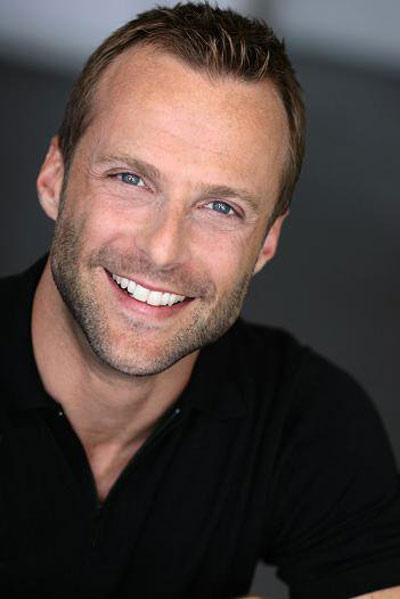Even though Event Manager Jerry Calumn was told routing riders through Dallas and Fort Worth wasn’t possible, he refused to take ‘can’t’ for an answer
DAVID TAFFET | Staff Writer
taffet@dallasvoice.com
When he took over as the new event manager of Lone Star RideFighting AIDS, Jerry Calumn started hearing about a number of things he “couldn’t do.”
For instance, LSRFA cyclists said they wanted people to come out and cheer them on. But the route the last few years has been mostly rural, and getting groups out was something Calumn “couldn’t do,” he was told.
Riders told him they wanted to ride where people would see them.
“Riders felt disconnected from the cities we serve,” Rider Retention
Co-Chair Michael Wilkesen said.
But changing the route was something Calumn was told he “couldn’t do,” because permits and other obstacles would make it too expensive and logistics would make it too hard.
But Calumn wasn’t willing to settle for “couldn’t do.” So through the summer, he worked quietly with Wilkesen, mapping out a new route and making plans to get people out to cheer on the riders.
The ride begins and ends again this year at the American Airlines
Training and Conference Center in North Arlington, as it has for the past few years. The difference this year is that instead of making loops northwest of the center on Saturday and southeast on Sunday through suburban and rural terrain, this year’s routes move through Fort Worth on Saturday and Dallas on Sunday.
“And you know what it cost us?” Calumn said. “Nothing. Not one damn penny.”
Calumn encouraged the community to come and cheer for riders and suggested some of the best times and places to do that.
The routes
Pit stops and lunch stops for the riders are great places for supporters to gather and cheer them on.
On Saturday, Sept. 24, Pit Stop 2 will be at the Rainbow Lounge in Fort Worth. Riders are expected through there between 8:30 a.m. and 11 a.m.
Pit 3 is the lunch stop. That takes place at the Pour House on 7th Street between downtown Fort Worth and the Cultural District. Riders attempting the 100-mile “century” route to Eagle Mountain Lake must leave lunch by 11:30 a.m. Other riders may linger here until 2:30 p.m.
One of the highlights of the Fort Worth route will be 22 miles along the Trinity Trail. That scenic system of trails follows the Trinity River as it winds through the city. Riders will pick up the trail near Texas Christian University after the Rainbow Lounge pit stop, detour off the trail for about a mile for the lunch stop and then pick it back up for the ride around the Fort Worth Stockyards.
Wilkesen said that unfortunately the ride cannot go through the Stockyards because of the bike-unfriendly cobblestones in the area.
Day 2 takes riders through Irving to Dallas, then back to the American Airlines training center for closing ceremonies.
The first stop is the new Irving Convention Center.
“It’s an architectural gem sitting in the middle of Las Colinas,” Calumn said.
He said that Irving was excited about the ride coming through the city and was very helpful. Riders travel through Irving both in the morning and afternoon.
A highlight of the Sunday route will be riding through Oak Lawn. This will be the first time the ride has traveled down Cedar Springs Road.
Pit Stop 2 will be at Station 4. Most bike riders will pass Cathedral of Hope between 9 a.m. and 11 a.m. The church promised a cheering section as riders pass.
From there the route turns north on Turtle Creek Boulevard and crosses Highland Park before heading north to Webb Chapel Park.
The ride through Irving will be on the Campion Trail. “Irving invested well in its park system and it shows,” Calumn said.
He called the highlight of the afternoon the stop in North Lake Ranch Park, located on one of the highest points in north Dallas County and with a panoramic view of the area. Of course, for riders, that’s a mixed blessing: To get to the highest point means riding up hill. And the uphill ride comes in the afternoon after they have already pedalled more than 40 miles.
But once there, the ride back to base camp for closing ceremonies is mostly down hill.
Both Calumn and Wilkeson said they believe that the higher visibility of the routes this year will help with organizers’ ongoing efforts to grow the ride.
“With more visibility, we’ll get more riders,” Wilkesen said.
In a battle of Dallas vs. Fort Worth, Wilkesen suggested Irving wins as the city most aggressively interested in bringing the ride through town. He said the city even mapped a safe and scenic route for him, saving him a lot of time.
Calumn said Fort Worth has the most sophisticated plan to host groups like this. In Dallas he met with police, parks and events separately. He complimented each department for its cooperation.
But, he said, Fort Worth held one meeting with him that also included the health department.
“That way, police can talk to streets,” he said. “It’s very helpful.”
Closing ceremonies take place at the AATCC at 5 p.m. The Riderless Bike leads the procession as riders return and complete a year of fundraising that is expected to bring the total raised in event history to more than $2 million.
Lone Star Ride Fighting AIDS closing ceremonies, American Airlines Training and Conference Center, 4501 Highway 360 South, Fort Worth (just south of DFW Airport). 5 p.m. Everyone welcome.
This article appeared in the Dallas Voice print edition September 23, 2011.














